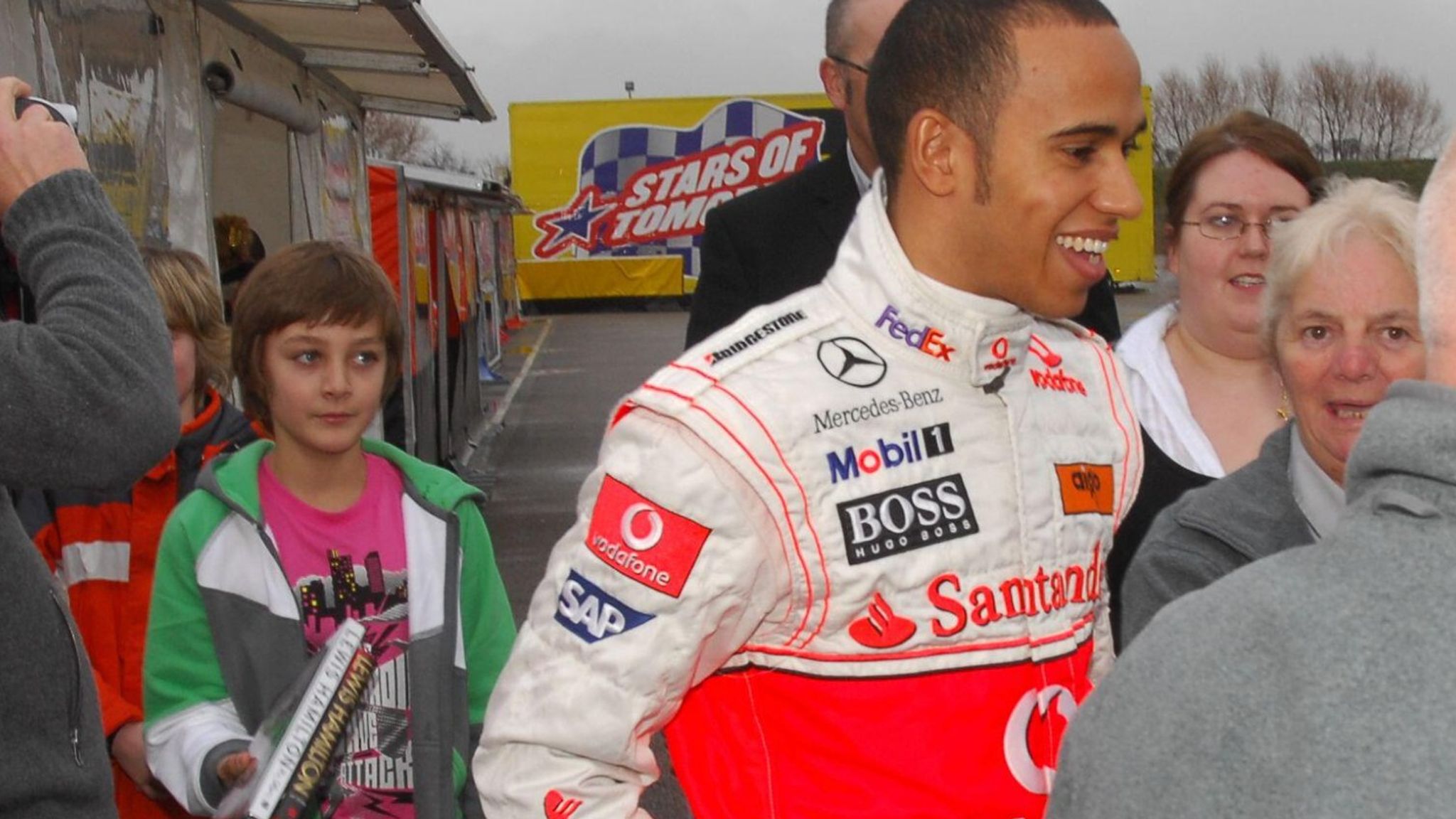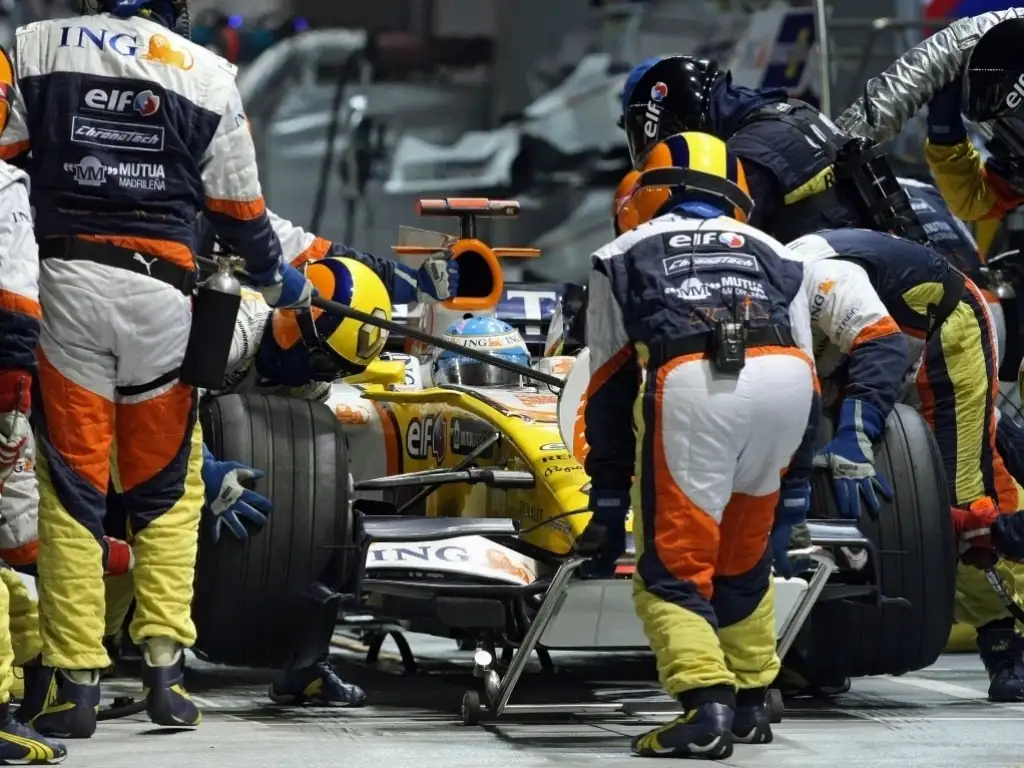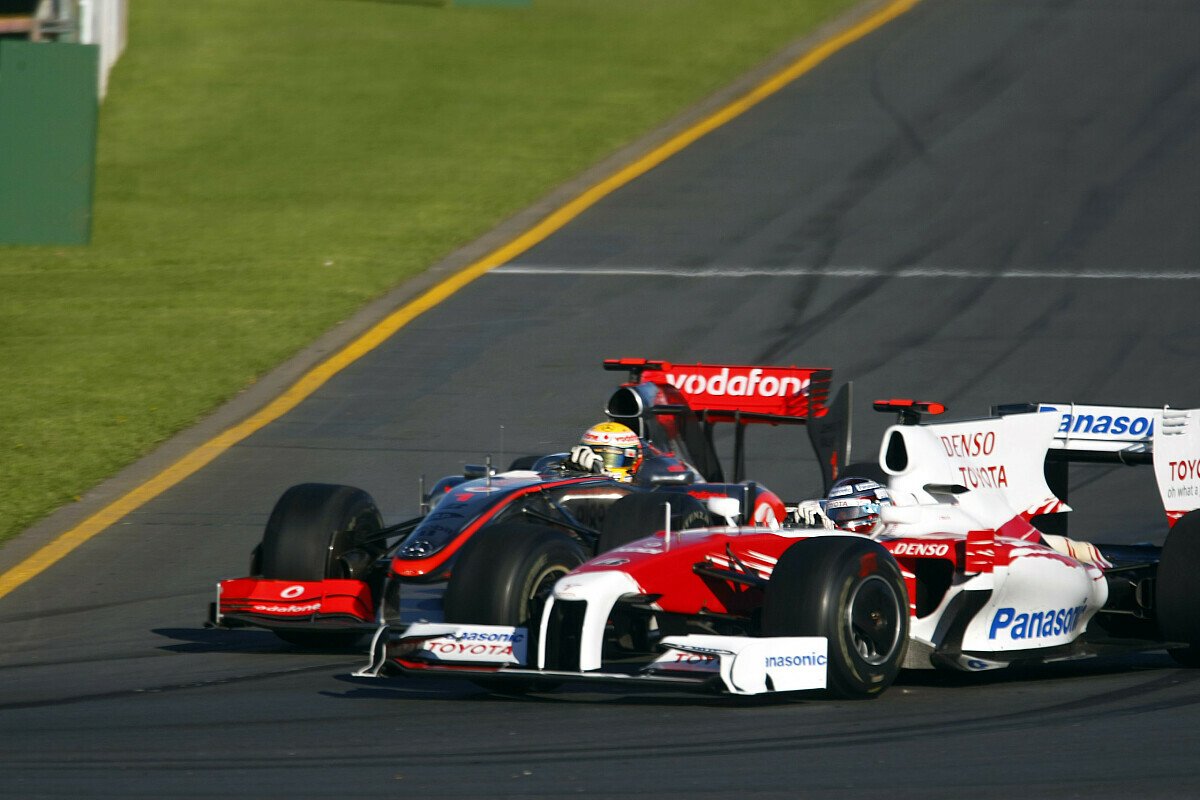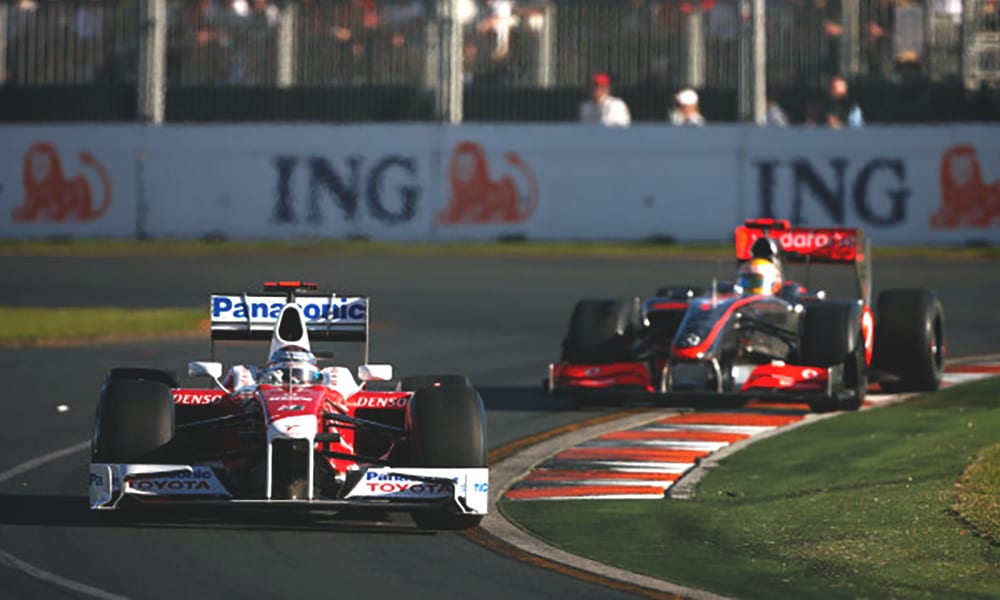Lewis Hamilton’s Controversial Start: Unraveling ‘Lie-Gate’ at the 2009 Australian Grand Prix
During the nascent phase of his illustrious career, Lewis Hamilton’s journey in Formula 1 wasn’t always marked by flawless performances. One of the standout incidents occurred in the 2009 Australian Grand Prix, a race that would become notorious for ‘Lie-Gate’ and its repercussions.

The 2000s were a tumultuous decade for Formula 1, witnessing scandals ranging from technical infractions to team expulsions. The 2007 Spygate involving McLaren and the infamous Indianapolis debacle in 2005 had already left their mark on the sport’s history.
Fast forward to 2009, a season inaugurated with a race that introduced major aerodynamic rule changes, simplifying and decluttering the cars. Brawn GP stole the spotlight with a one-two finish, thanks to the controversial double-diffuser that sparked ongoing debates about its legality.
Amidst this backdrop, reigning World Champion Lewis Hamilton, driving for McLaren, finished third in the race. However, the controversy unfolded when it was revealed that Hamilton and the team had provided misleading information to race stewards. During a late Safety Car period, Hamilton overtook Jarno Trulli’s Toyota, securing a third-place finish.

What ensued became known as ‘Lie-Gate.’ It was uncovered that McLaren instructed Hamilton to provide inaccurate statements to the stewards regarding the circumstances of the overtaking incident. This breach of integrity led to Hamilton’s disqualification from the race and severe consequences for a long-serving McLaren employee who was dismissed as a result.
The incident underscored the challenges faced by teams and drivers in the competitive and high-pressure world of Formula 1. ‘Lie-Gate’ remains a controversial chapter in Hamilton’s career, serving as a reminder of the sport’s complex dynamics, both on and off the track.
The ‘lie-gate’ scandal
The 2009 Australian Grand Prix became the stage for a Formula 1 controversy that unfolded after a crash involving Sebastian Vettel and Robert Kubica prompted the deployment of the Safety Car. With Jarno Trulli running third and Lewis Hamilton fourth, McLaren made a pivotal decision that would lead to a sequence of events with significant consequences.

McLaren instructed the reigning world champion, Hamilton, via radio to allow Trulli’s Toyota back past during the Safety Car period. Hamilton complied on the exit of Turn 4, technically meaning that Trulli had overtaken him while the Safety Car was still on-track. This led to a 25-second time penalty for Trulli, based on McLaren’s claim that no instructions had been transmitted over the radio.

However, the controversy deepened when evidence surfaced in Malaysia, revealing a radio interview that contradicted Hamilton’s earlier statements. The communications clearly demonstrated that Hamilton had been instructed to let Trulli back through. This revelation prompted Hamilton’s disqualification from the Australian Grand Prix, and McLaren faced a suspended ban from the FIA, contingent on avoiding similar incidents.
The fallout extended to McLaren’s team manager, Dave Ryan, who was dismissed for misleading the stewards. Hamilton, to his credit, offered a truthful apology to the stewards and the media, acknowledging the misinformation provided earlier.

The incident served as a reminder of the intense scrutiny faced by teams and drivers in Formula 1, where decisions made under pressure can have far-reaching consequences. The unfolding of untruths and subsequent penalties highlighted the importance of integrity and transparency in the sport, shaping the narrative of the 2009 season.
Hamilton almost hung up his helmet on the willows
Some years later, Hamilton admitted he almost wanted to quit F1 in the aftermath. “It was a lot to deal with after everything that had happened,” he revealed. “I care a lot about the way people look at me.”

“I thought: ‘Hey, maybe I shouldn’t be here in this sport’. But McLaren is my dream team and I should count myself lucky to have raced here since the beginning of my F1 career. I’ve never wanted to drive for another team, so at that point it wasn’t a desire to leave the team, it was just to stop racing. For a moment I thought, ‘This is too much to handle. How do I come back from this?’.”
But the people around Hamilton knew how to get him through it.

“I love racing, but I just didn’t know … sometimes it’s just hard to deal with the consequences. It’s hard to deal with people who as soon as you turn their back on them immediately talk about you. It created negative energy and I don’t like that.”
“However, I quickly realized that it wasn’t just negative energy and that I received a lot of support and respect.

That made me stronger. It was an extraordinary experience. I can’t predict the future, but I love the sport, I’ve always said that. I love winning, in a fair way. Integrity is very important to me.”







